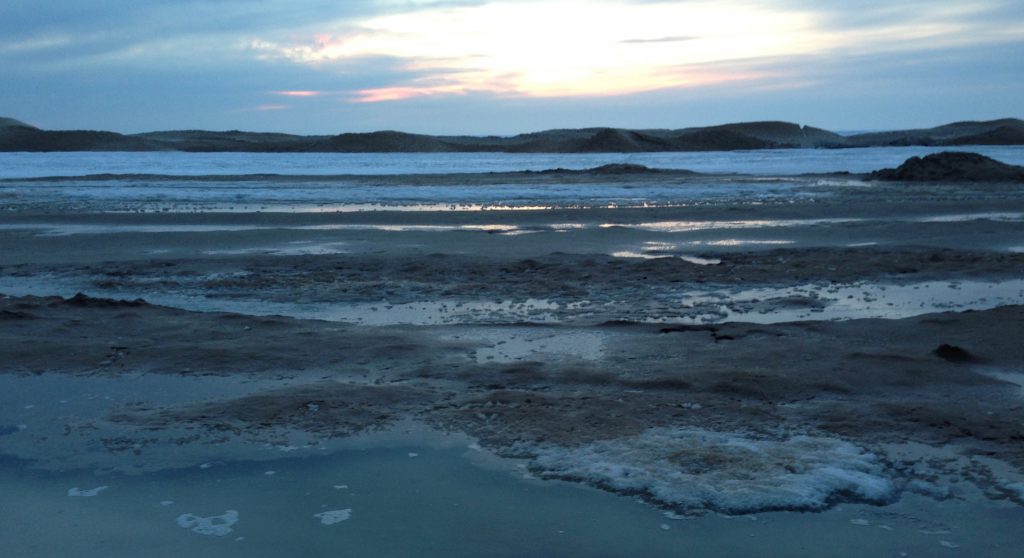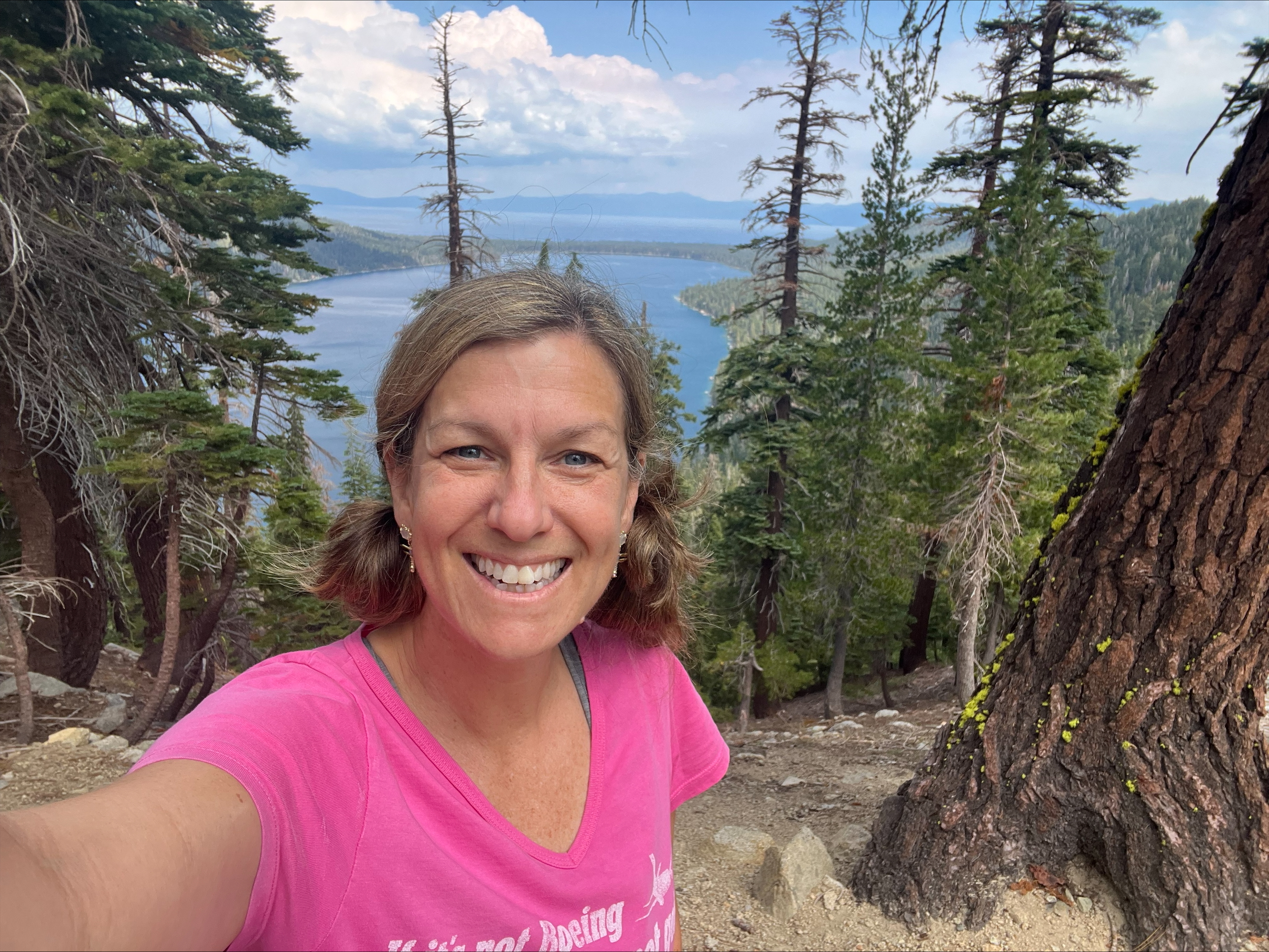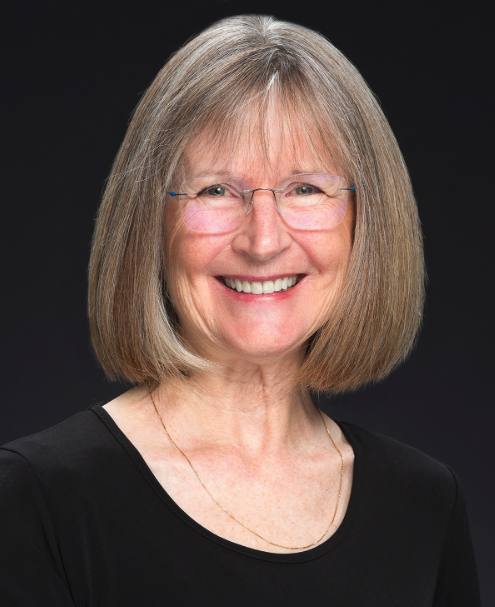Now the earth was formless and empty, darkness was over the surface of the deep, and the Spirit of God was hovering over the waters. — Gen. 1:2
I’ve been enjoying darkness this year. Not minding the winter darkness is a helpful survival skill in Michigan, where the shortest day of the year means a mere nine hours of daylight. And by daylight, I don’t mean blazing sunshine. Yesterday, winter solstice day, “daylight” amounted to a dim, pearlescent glow at best. I didn’t mind.
Once classes finished for the semester, I turned my full attention to the stacks of grading, not bothering much with Christmas preparation. My kids are grown and my husband is also an academic, so we’ve ignored the frenzied fuss. Our work demands keep us fully occupied.
Between meetings and grading, though, I’ve cherished Advent through a few beautiful concerts and worship services. Songs of melancholy longing, like “Come, Then, Lord Jesus Come” and “Jesus, Christ, the Apple Tree,” spin around in my head, and that’s been enough.
When evening falls on these brief December days, I feel even less motivated to go out shopping or buzz around the house decorating. Instead, the deep darkness compels me to rest. After supper, I ignore the garish glow of my computer, turn the living room lights down, hide in my bedroom under a single reading lamp, and read. I go to bed early. I wake up late. I turn off the white noise machine and lie in bed listening.
The light shines in the darkness, and the darkness has not overcome it. – John 1:5
Day proceeds to night, and night to day—according to astronomers and meteorologists—through three phases of twilight. Civil twilight begins the moment the sun’s top edge slips below the horizon (for sunset) and lasts until the sun’s geometric center is six degrees below the horizon. The sky is still bright during this phase, and on a clear day, you can easily go about your outdoor business.
Nautical twilight spans the time when the sun is six to twelve degrees below the horizon. The horizon remains visible while the brightest stars appear. From twelve to eighteen degrees below the horizon, we enter the next phase: astronomical twilight. The sky deepens from ceramic blue to velvety violet to black. (Or, in cloudy Michigan, from gray to darker gray to black.)
How long each phase lasts depends on where and when you are. Near the equator, the sun pops up or down into day or night as if God flips a light switch. The poles, however, spend winter months bobbing through phases of twilight—sunrise never comes. Here in the middle reaches of the northern hemisphere, the civil twilight phase lasted 33 minutes yesterday afternoon. This morning, the total time from the beginning of astronomical twilight to sunrise was a full 113 minutes. Daylight comes, but it’s a long time coming.
Even the darkness will not be dark to you; the night will shine like the day, for darkness is as light to you. — Ps. 139:12
Barbara Brown Taylor complains that Christians too easily fall into commonplace associations of darkness with bad, light with good. “From earliest times,” she observes, “Christians have used ‘darkness’ as a synonym for sin, ignorance, spiritual blindness, and death.” Well, sure. The Bible frequently makes those associations. The densest concentrations of the words “dark” and “darkness” occur in the book of Job—which tells you something. As Taylor notes, there have always been good reasons to fear the literal dark, so no wonder we connect dark with trouble and fear.
However, Taylor proposes that we resist what she calls “full solar spirituality,” by which she means the notion that Christians must always be sunny and successful. If that is our picture of spiritual health, then we must flee or hide at all costs from “dark” spiritual states such as suffering, mourning, sadness, and discouragement.
Taylor rightly points out that this is unrealistic spirituality, to say the least. It also reflects a prejudice against darkness that nonhuman creation does not seem to share. Nighttime is full of life and activity. A whole new cast of creaturely characters comes out at night to go about their business. Fungi grow, owls hunt, waves continue to wash up on shore, breezes cool the earth. Different lights shine. Night is not absence; it’s a different kind of presence.
He made darkness his covering, his canopy around him—the dark rain clouds of the sky. –Ps 18:11
In the wisdom of the liturgical year, we circle around modes of revelation. We practice longing and waiting during Advent and Lent, we practice repentance, so that we know how to seek God when life feels, as we say, dark. When we are confused, when illness comes, or death, when we have been foolish, when injustice festers and wars never cease. The faithful testify through the ages that God comes in mercy during times of such darkness.
But taking a cue from Taylor, what if we resist associating Advent darkness only with suffering and pain? In these last weeks, I’ve noticed that darkness can also bring blessed quiet, relief from stimulation. I sit in my dark room under a single lamp and I can focus, finally, on the book in my hands. My husband and I illuminate our dinner table with candles, and we feel more together by this gentler light. Darkness can bring focus, concentration, trust.
And perception. The only sense diminished in darkness is eyesight. Hearing, smell, taste, and touch are heightened. I remember treasuring—sometimes—the hours I nursed my babies in the night, because without the day’s distraction, I could feel: feel the baby’s warmth against my body, feel my exhaustion, my fierce connection to this child, the child’s instinctive trust.
We associate light with revelation, which is only fitting. But it seems that darkness, the darkness of stillness and rest, is an alternative spiritual condition, sometimes just the condition God needs for a miraculous revelation. Perhaps the deep and dreamless sleep of Bethlehem, as the song says, reveals the silent stars going by, the angels keeping their watch of wondering love.
The people walking in darkness have seen a great light; on those living in the land of deep darkness a light has dawned. – Isaiah 9:2
In my liturgical purist moments, I’ve often muttered that we should all refuse to do any Christmas festooning, shopping, or fussing until December 24. We should see Advent through to completion, and then we can go wild, partying our way through the traditional twelve days until Epiphany. After all, wild revelry has been linked to pagan winter festivals since ancient times, a fact that Pope Julius apparently took into account in the fourth century when he set the date for the Feast of the Nativity as December 25.
While the pagans were winding up for revelry, Christians were praying the O Antiphons. These prayers of longing for Christ, based on Christ’s biblical titles, are familiar as the seven verses of the hymn “O Come, O Come Emmanuel.” The Latin Catholic rite features one antiphon per day for the last seven days of Advent. Guess which one is traditionally prayed on December 21? That’s right: O Oriens:
O Radiant Dawn,
splendor of eternal light, sun of justice:
come and shine on those who dwell in darkness
and in the shadow of death.
So I’m changing my proposal now. Instead of a sudden switch from Advent longing to Christmas revelry on the 24th, I suggest declaring the period of the 21st to the 24th as a kind of liturgical twilight season. The Morning Star rises out of the year’s longest night, as is fitting. But we could take a few days, go through a few gradual phases, before the natal moment breaks over the horizon.
So much of life seems to happen in the twilight phases, on our way toward deeper darkness or brighter light. We need a spirituality for these times, too.
Whether darkness has come for you this year in lament and grief or quiet and trust, may the Dayspring rise upon you in beauty and grace.






One Response
I loved your reflections on twilight and the dark and relating it to Advent as you did! To me, darkness can be a kind of Refugia for the soul. I love sitting in the dark with only firelight, or no light. The prayer of Silence fits best for me in the darkness. And I love walking in the dark, with only a few dim lights on the street, or stars and moon the only light on the beach. Have you read Clark Strand’s wonderful book “Waking Up To the Dark: Ancient Wisdom for a Sleepless Age”? I am sure it would resonate powerfully with you as it did with me.
Keep up your wonderful work and inspiration! much love, Mom